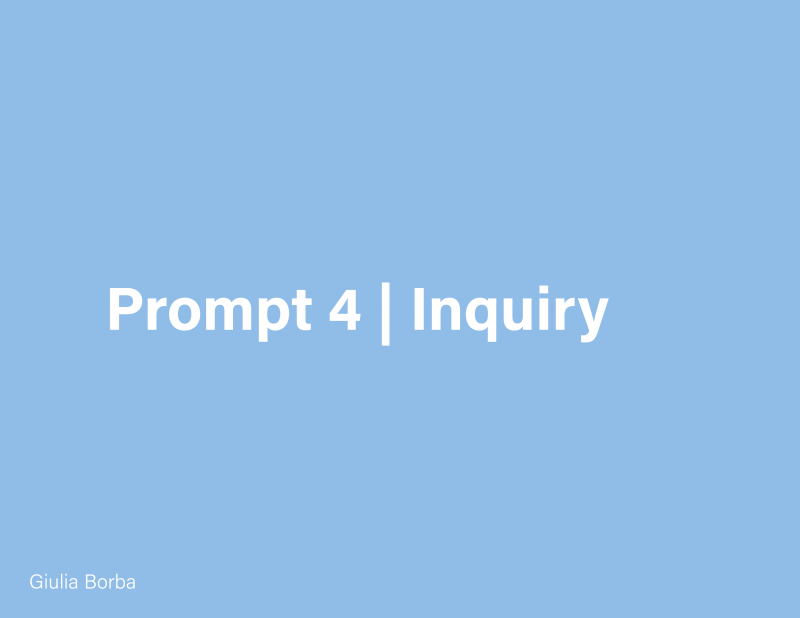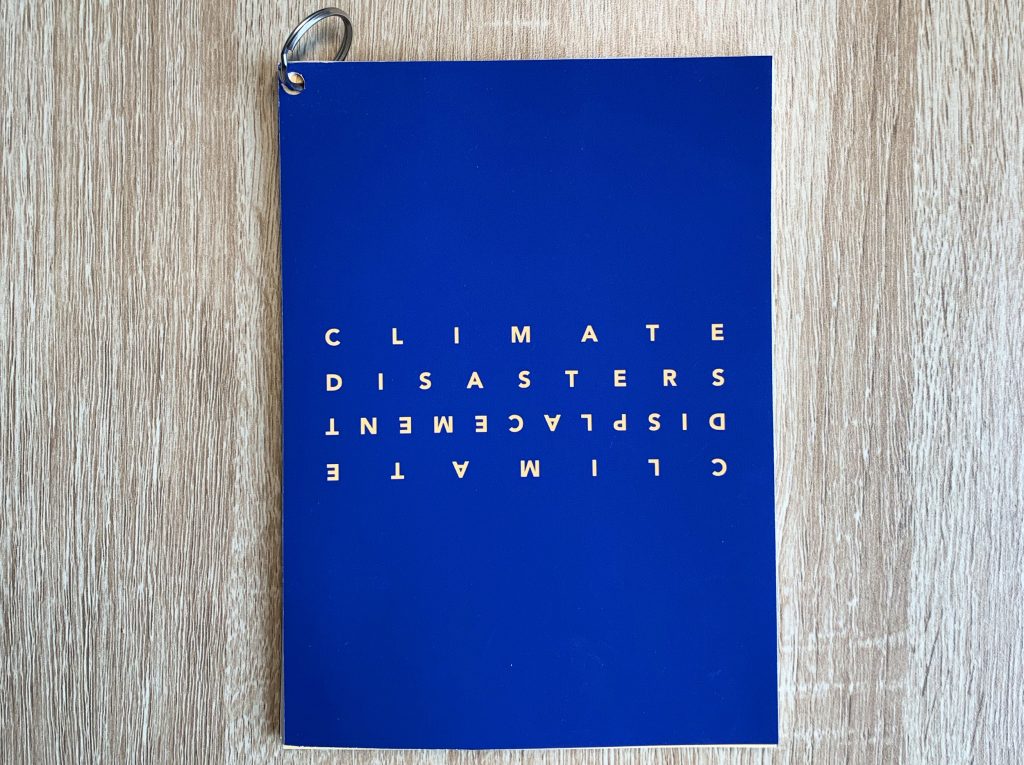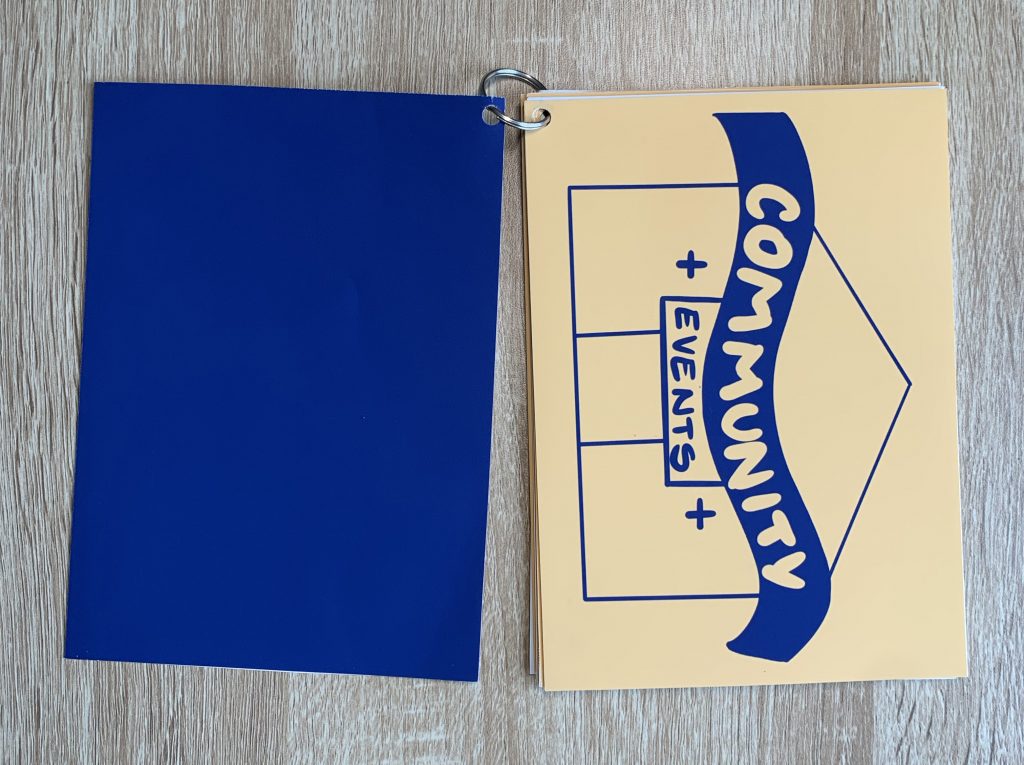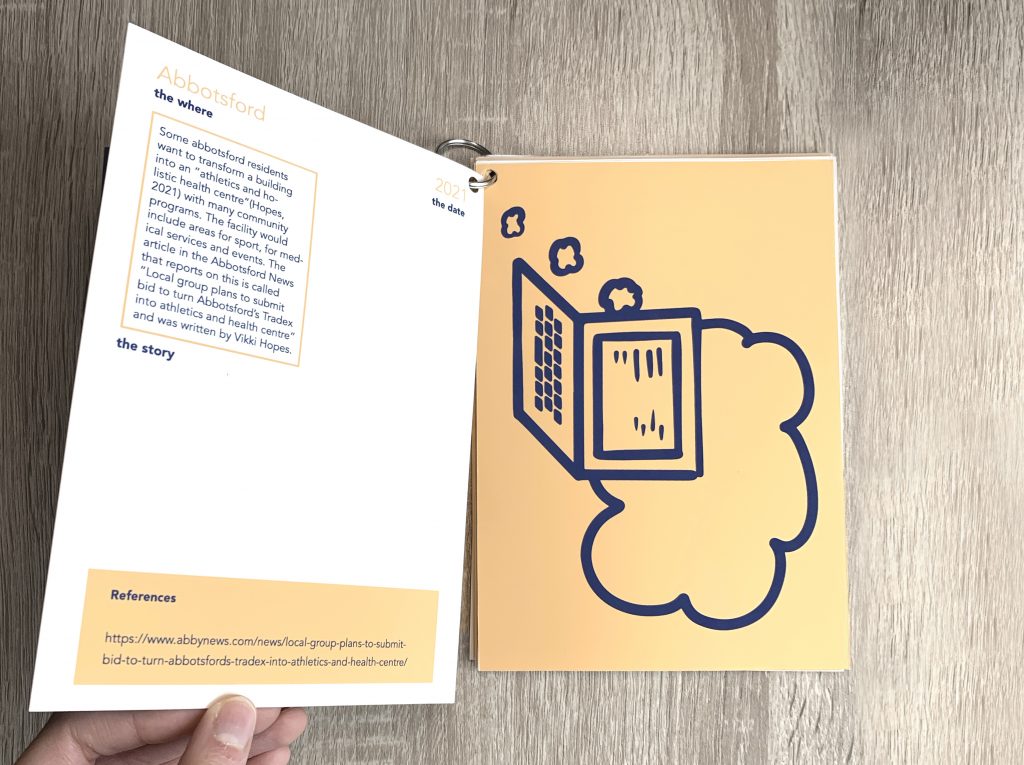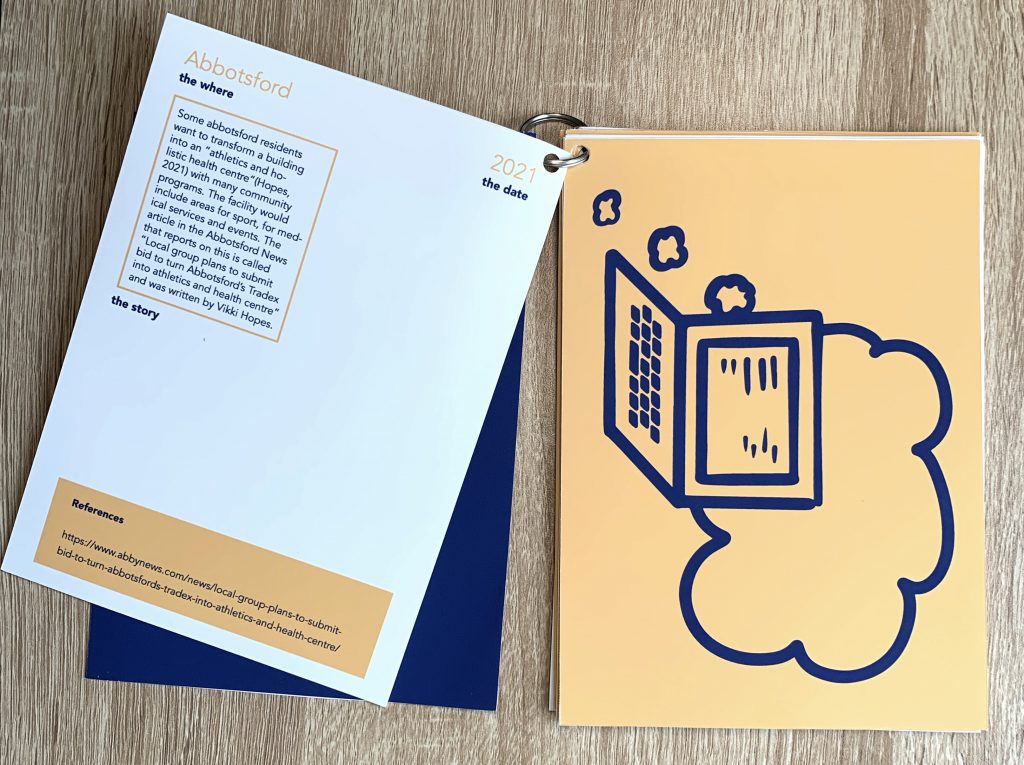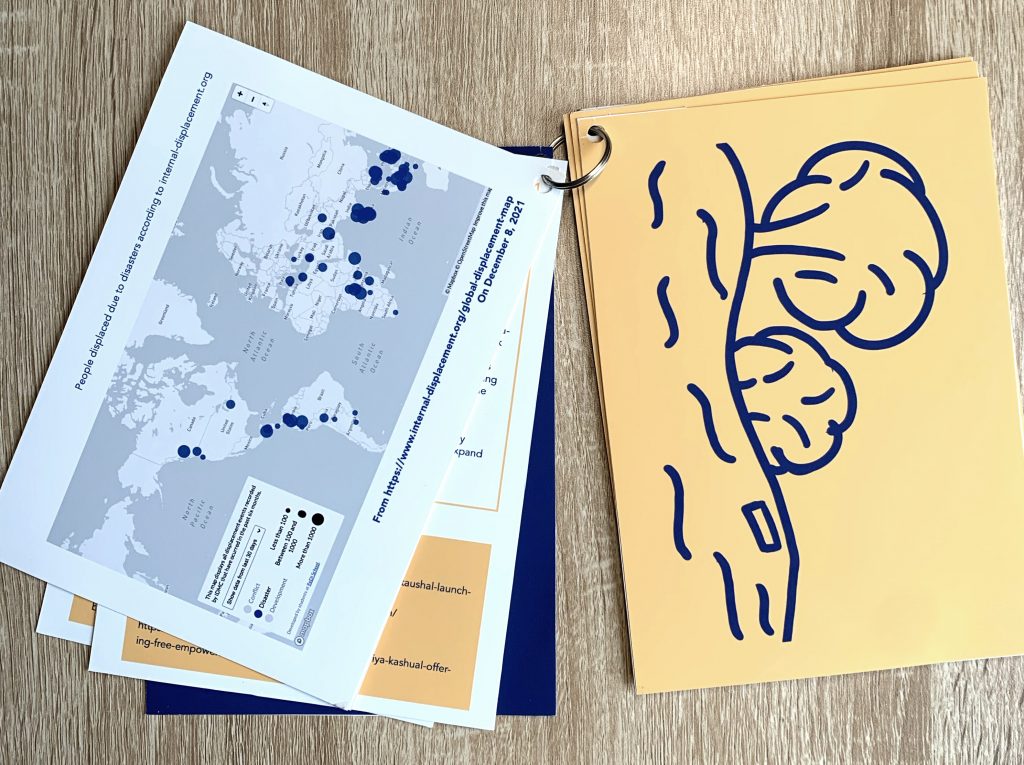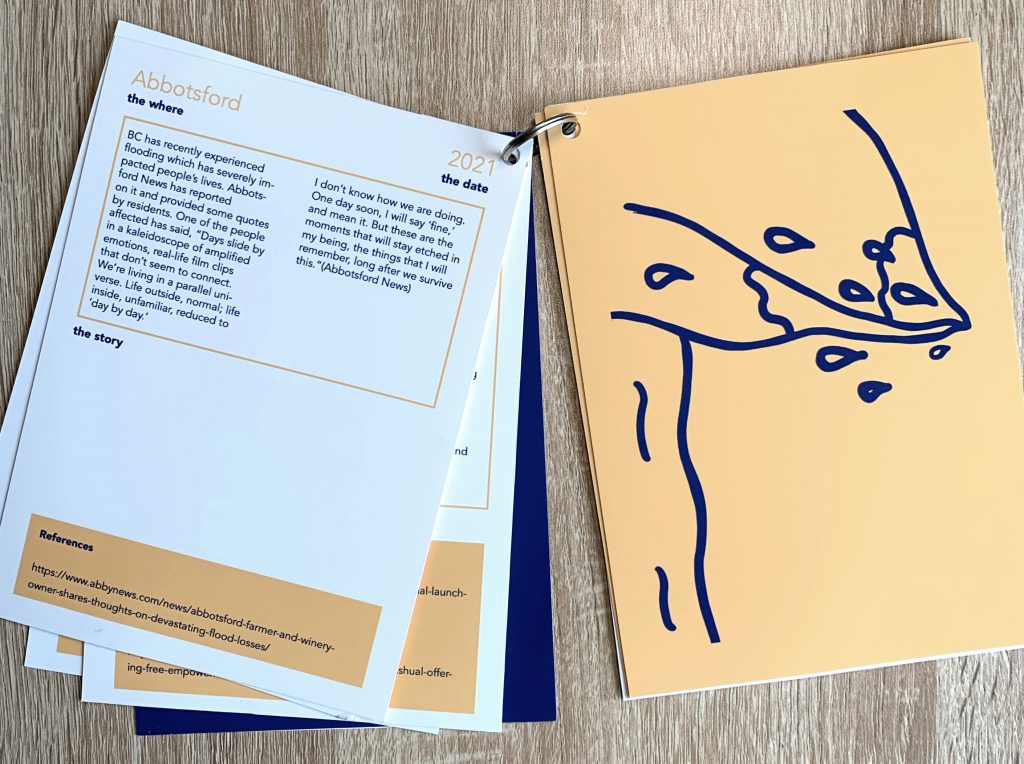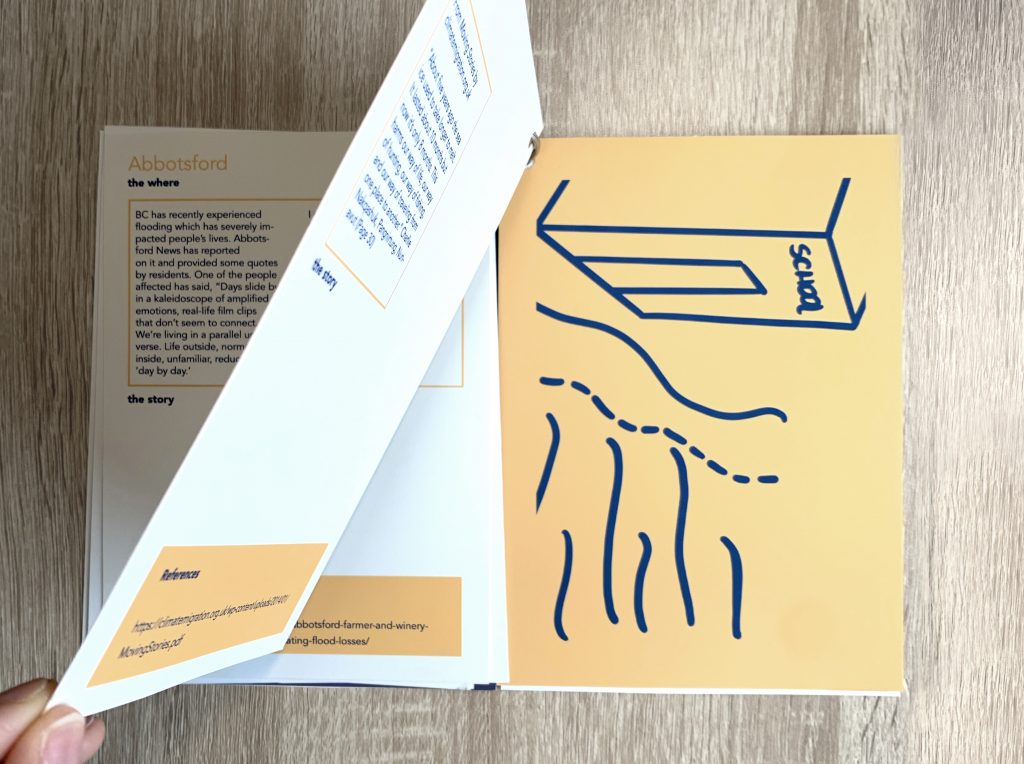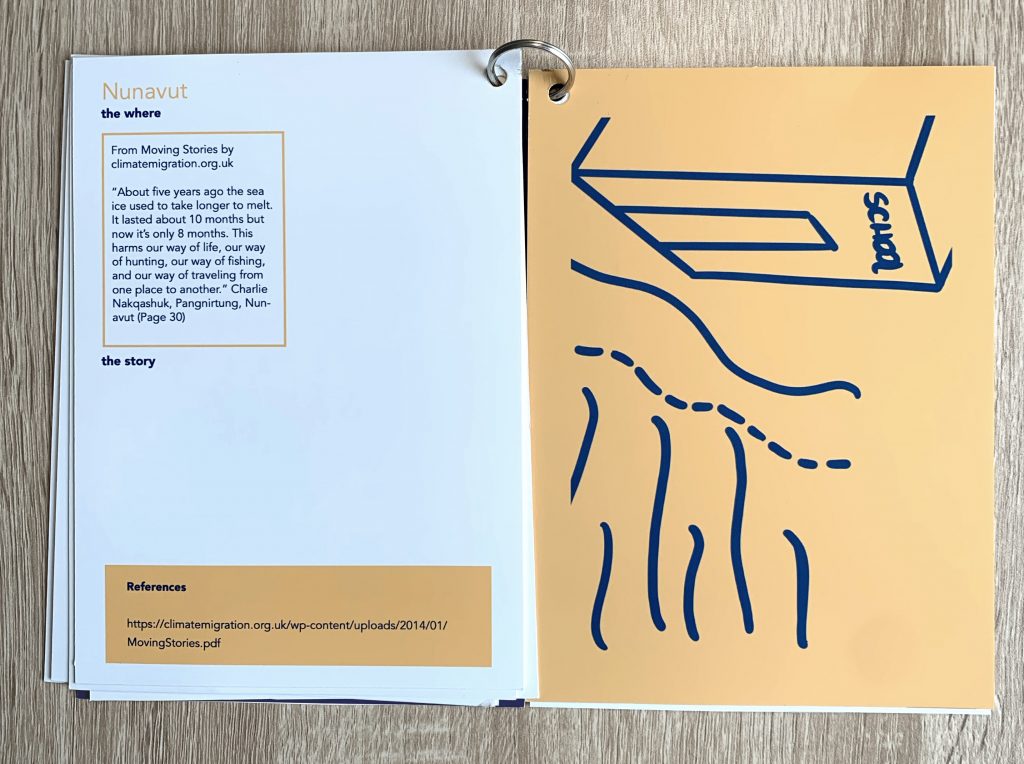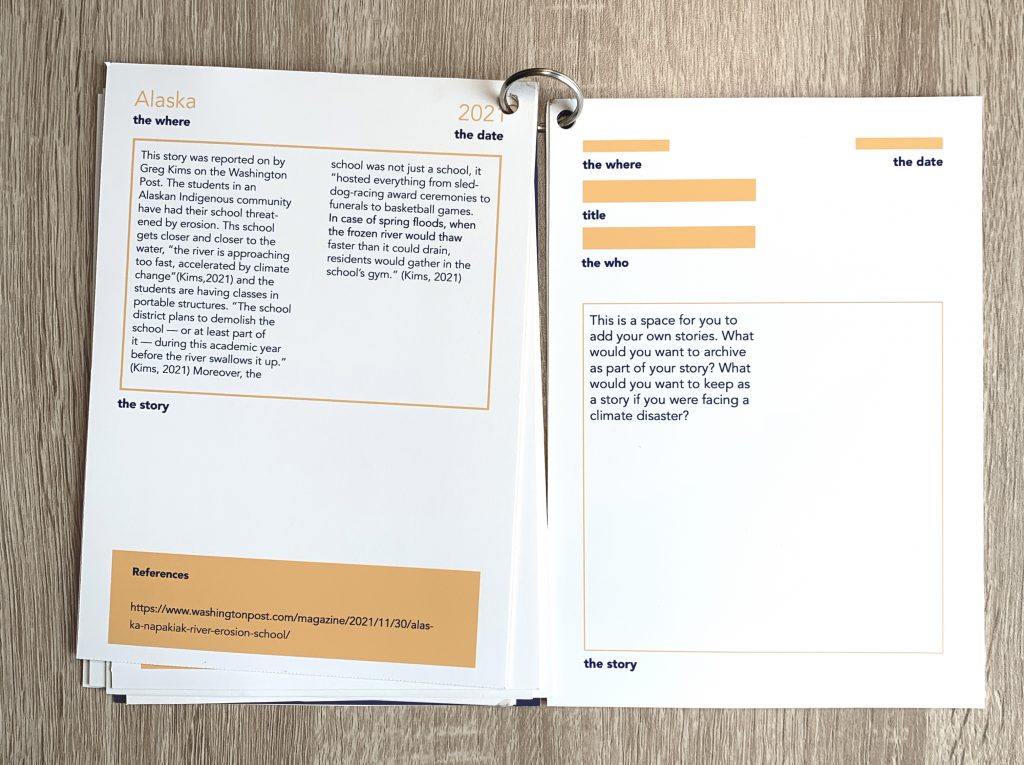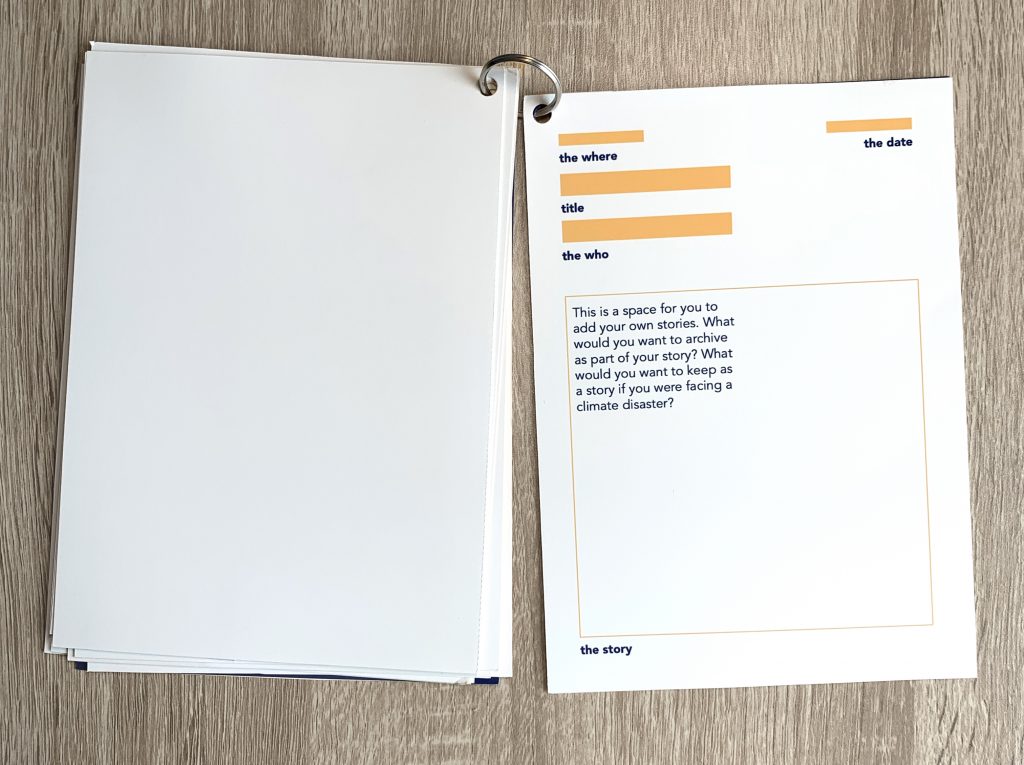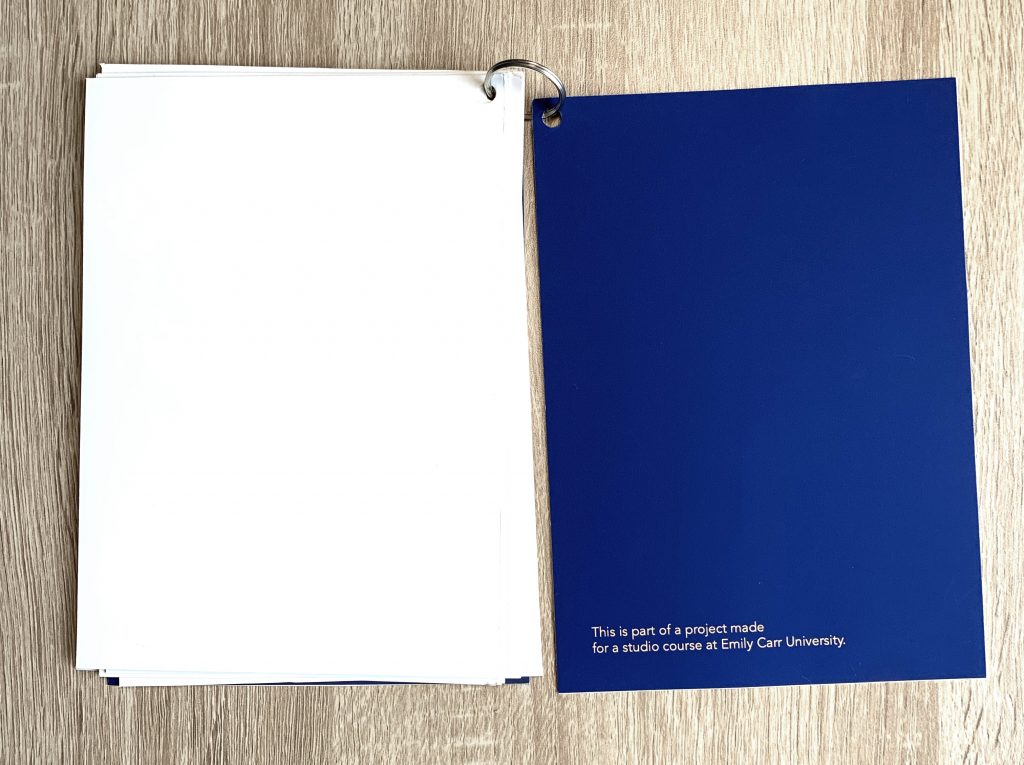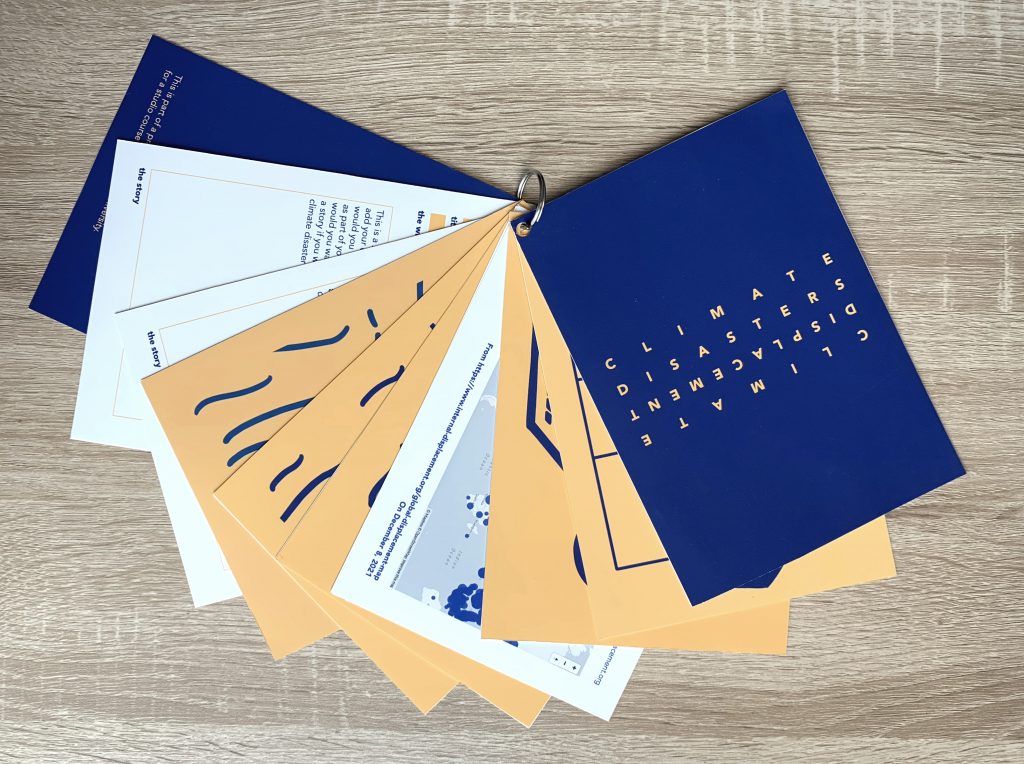Prompt 4 | Inquiry
For prompt 4 we were asked to come up with a research question and start attempting to answer it. We had about 4 weeks to complete it.
The first week I wrote down a series of questions, they ranged from large issues to smaller more specific questions, and even some existential questions. But after some deliberation and background research, I decided on my question. How aid women refugees in telling their stories to be empowered? Around that time BC was being hit by intense rain and flooding in some areas and people were being displaced, it did not take long for me to revisit the question and transform it into How may we aid climate displaced people in telling their stories leading to empowerment?
In the weeks that followed, I conducted some secondary research and looked at some case studies that related to the subjects or context of my question. Four of these stood out. The first was Aram Sinfuentes’ “US Citizenship Test Sampler” work (found here: https://www.aramhansifuentes.com/us-citizenship-test-sampler). These samplers are sewn with questions and answers of the US Citizenship test and are then sold for the amount of the test fee, giving non-citizens the ability to pay for the test and become more empowered in US society. The other study that related to refugees and displaced people was the Jesuit Refugee Service and their image treatment. This organization only shows images of refugees that show their strength and resilience, their ability to take action and take charge of their lives. No image that could portray negative images is used. The other two examples are related to the power of stories. The exhibition “A Mile in My Shoes” by the Empathy Museum (found here: https://www.empathymuseum.com/a-mile-in-my-shoes/) asks visitors to listen to other people’s stories while walking in their shoes and Pablito Aguiar, a Brazilian graphic designer, draws comics based on real stories transforming the narrative of the city into that of hope, resilience, and inspiration (found here: https://www.instagram.com/p/CSRzJh7nh7j/). Aguiar’s subjects then see their stories in the city’s newspaper and are empowered by this action.
At the same time, I constructed an empathy map. The main takeaway point from it in my research was the part of having control. Climate displaced people seem to have very little control over their own situation.
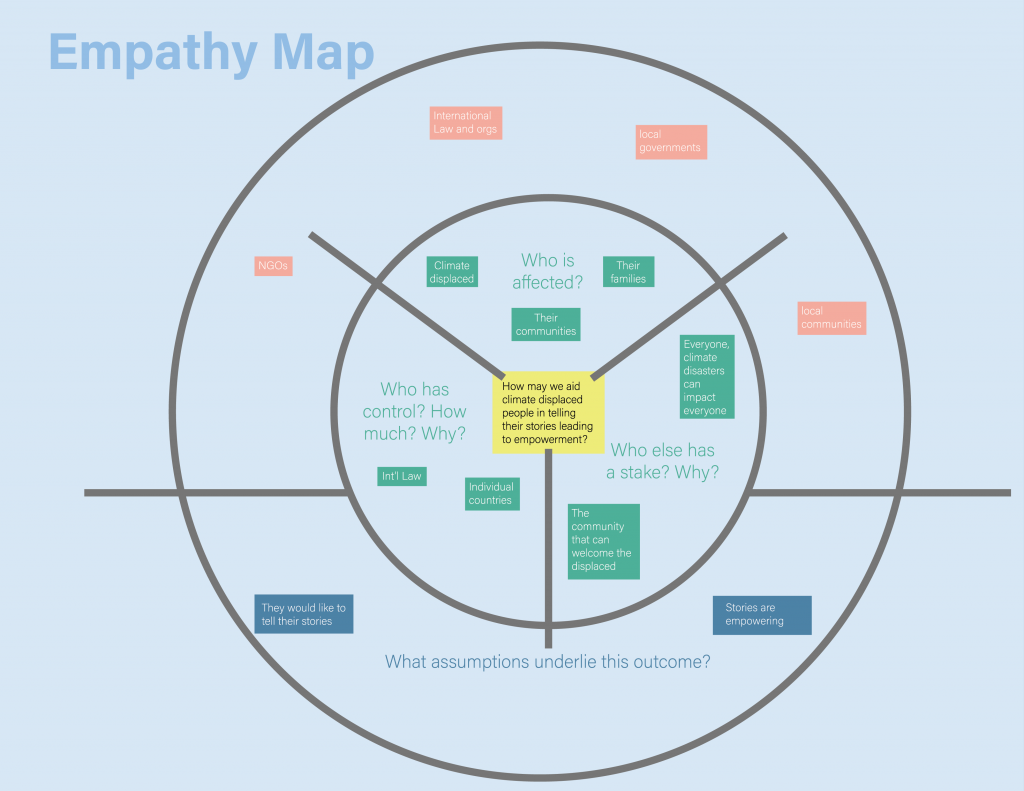
Following this, I searched for real stories of climate-displaced people. It proved to be quite hard to find anything that expanded on the people’s stories and was not just a small account of the disaster.
This led me to the outcome of this prompt. I made a set of curated and illustrated cards that call attention and present stories around climate displacement. Because I did not interact with climate-displaced people for this prompt, I relied on newspaper stories and organizations that collect climate-displaced stories. The cards/book starts with stories of the Abbotsford, BC area or its residents and what people were doing before the flooding. These are followed by informational maps from the IDMC (Internal Displacement Monitoring Center) showing internal displacement due to disasters in the last 30 and 180 days. The next few cards contain climate displacement stories, which as mentioned before, focus mainly on the disaster itself. Lastly, I added template pages that provoke the reader to reflect on the locality and recurrence of these disasters. The template is a space for the reader to record their story, thinking about what they would want to have documented if they had faced or were facing a climate disaster.
I found it important to add the template pages and the stories before the disasters because it was a way to provoke reflection as well as showcase that the people who faced disaster have stories that go beyond a certain climate disaster, they had their lives and hopes and dreams. The stories before remind us that there is much more to their stories, that being impacted by a climate disaster is not all that there is to the stories we can tell, and that there is power in remembering one’s stories and goals.
References for cards:
https://www.abbynews.com/news/abbotsfords-saniya-kaushal-launches-you-are-not-ugly-foundation/
https://www.instagram.com/youarenotuglyfoundation/
https://saniyakaushal.com/books
https://www.abbynews.com/news/abbotsfords-saniya-kashual-offering-free-empowerment-workshop/
https://climatemigration.org.uk/wp-content/uploads/2014/01/MovingStories.pdf
https://www.washingtonpost.com/magazine/2021/11/30/alaska-napakiak-river-erosion-school/
https://www.internal-displacement.org/global-displacement-map
